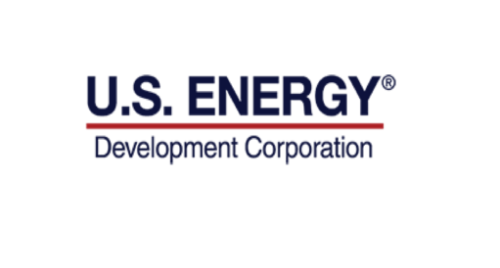U.S. Energy Development Using Lessons of Previous Downturns to Grow in 2020
As Seen On the Dallas Business Journal
By Evan Hoopfer Assistant Managing Editor
This isn’t the first time leadership at U.S. Energy Development Corp. has gone through a dramatic market downturn.
That’s why the company had a game plan in place of how to combat the challenges brought on by COVID-19, and was quick to make the necessary moves when the price of oil plummeted this spring.
In the following conversation, Jordan Jayson, chairman and CEO of the Arlington-based oil and gas company, explains how the company was able to grow revenue, bring back all furloughed employees as well as restore wages to pre-COVID levels in a matter of months:
What has your company done to combat challenges brought on by the pandemic?
Due to the team that we have in place, we have navigated COVID as best as possible, especially considering the industry that we’re in saw a price crash occur in the midst of COVID. It was a team effort.
The experience our team had from navigating the 2015 price crash and the downturn in the oil and gas industry gave us the experience in crisis management to recognize levers that we needed to pull internally at a much more rapid pace in 2020. That allowed us to succeed and grow during this timeframe.
What levers did you pull?
When COVID began, oil was at $55. As COVID escalated, oil and gas prices began to fall. On a particular Friday afternoon, oil was at $55. We woke up on Monday and oil was at $45.
The executive management team walked into a room and we collectively agreed that we needed to reduce our wages, G&A and overall costs immediately.
Compared to my experiences in the past of navigating crises as a CEO, it’s critical to have a team that is aware and understands the complexity of crisis management and also some of the hard decisions that need to be made swiftly so that you preserve the value of the firm, to continue to employ people and hopefully be in a position to grow coming out of these types of cycles.
Have you started growing again yet, or are you in the midst of the downturn still?
We’ve been growing throughout the downturn. Financially, the company came into the downturn with very low debt and available cash. There have been companies that have unfortunately needed to transact to stay solvent and we’ve been there as a potential option. I don’t want to make it sound like we took advantage of the situation, but there were just companies that had to free up cash.
What we said to those companies was, ‘If you need to transact, we can come up with a creative and flexible structure so even though you don’t want to sell your asset at $35 oil, maybe we can structure it so there’s some additional upside for you if prices increase.’
Due to our lessons from the previous crisis, we’re very, very conservative about leverage and about our costs. This allowed us to be creative and flexible with potential joint venture partners or people that were selling assets to create liquidity for their own firms. We have successfully closed on numerous transactions over the past six months.
How many more wells do you have now compared to before COVID?
I would say 15 percent more. We also have have been drilling additional oil wells, despite these commodity prices, because we’ve seen service costs drop dramatically. This has been an opportunity to go out and drill new wells.
How will revenue be this year be different compared to last year?
We expect revenue to be up 10-15 percent, but we also expect margin expansion due to lowering our fixed costs and also lowering our costs at the field level, or the asset level.
You mentioned the industry downturn in 2015. How does that downturn compare to this one? Are there any similarities?
COVID has added a new level of complexity beyond belief. The similarities are you need to be 100 percent focused on your costs, you need to be disciplined about your hedging to protect your revenue and if you’re conservative with debt, you can navigate these types of crises without laying off two-thirds of your company and taking dramatic restructuring steps.
If revenue will grow 10-15 percent this year, why did you enact cost-cutting measures?
We just didn’t know how low we were going to go. We knew that we were going to go lower, but we wanted to make sure that if we stayed lower for longer, we could protect the firm and stay remain free cashflow positive.
Some of those costs, whether they’ve been contracts that we’ve renegotiated or fixed costs that we reduce, we see that fixed-cost reduction carrying forward with prices normalizing hopefully.
This interview was edited for brevity and clarity.







 Since 1980, U.S. Energy has invested in, operated, and/or drilled more than 2,400 wells in 13 states and Canada; deploying over $1.5 billion on behalf of our partners.
Since 1980, U.S. Energy has invested in, operated, and/or drilled more than 2,400 wells in 13 states and Canada; deploying over $1.5 billion on behalf of our partners.